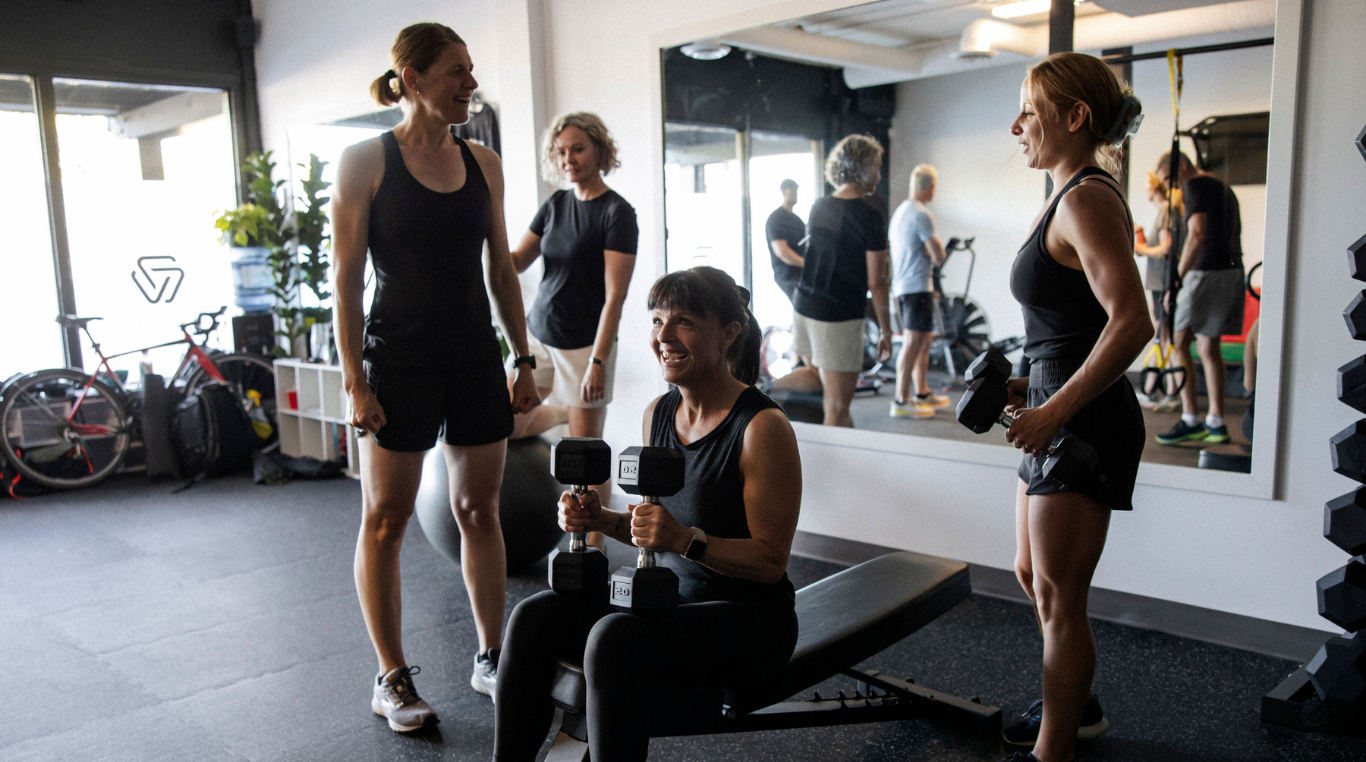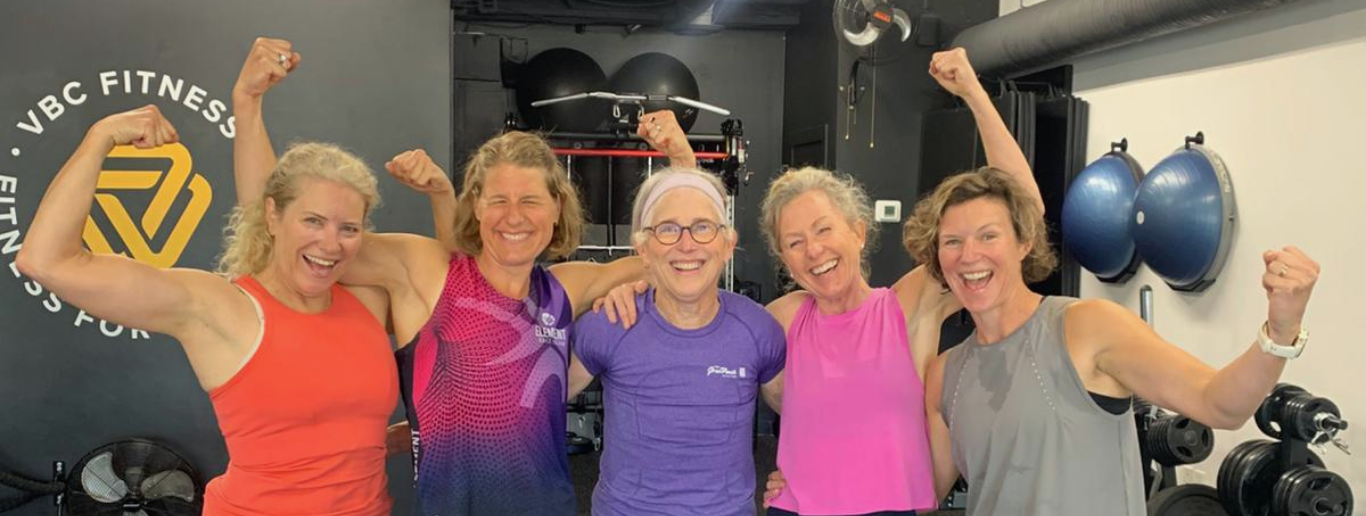Timing Strength: From Foundation to Performance

When we read or hear about strength, we are told LIFT HEAVY! But Strength is so much more. It’s knowing when to lift heavy, add reps, and how to weave power, stability, and recovery into your year so performance climbs without compromising long-term health. The goal: a body that’s capable now and resilient later. Variability + timing = win.
The Yearly Flow: How to Time Strength
The biggest question I hear from athletes is: Do I lift heavy all year round?The answer: No. You need variability to flow with the season stressors and within the training block.
It isn’t just about lifting - it’s spacing, sequencing, and letting recovery turn stress into strength.
-
Base (off-season): Build your foundation. Prioritize maximal strength and (for many) a short block of hypertrophy to shore up tissue capacity before volume ramps.
-
Build: Keep 2 strength sessions, trim total sets, add short, high‑quality intervals and small doses of power/plyometrics to convert gym strength into sport‑ready performance.
-
Competition phase: Maintain, don’t chase. Short, focused sessions; lower volume, keep intensity so the nervous system stays switched on.
-
Taper (race prep): Activation and quality movement—glutes, trunk, breath, mobility. Feel snappy, not sore. The training effect follows the stimulus-recovery-adaptation curve: stress → recover → supercompensate.
Key point: Recovery isn’t just downtime. it’s a deliberate part of training design that shifts depending on the block. Central fatigue early, neuromuscular later—the art is in spacing. Miss recovery and you miss the gains.
So… Heavy or Light?

There’s a lot of talk about whether it’s better to lift super heavy for just a few reps, or lighter weights for more reps. The truth? Both are essential, especially as we move through midlife.
→ Heavy lifting keeps our nervous system sharp. It trains quick-reacting muscle fibers, protects us from falls or stumbles, and helps us maintain bone density. This type of training is not about “bulking up”. It is about staying powerful, coordinated, and ready for life.
→ Lighter, higher-rep work builds and maintains muscle mass: the metabolically active tissue that keeps our energy high, supports our metabolism, and stabilizes weight as hormones shift. It’s also a powerful ally against the gradual muscle loss that accelerates after 40.
The sweet spot? Mix both. Team Element Athletes switch it up each season and ensures that integration of cardiovascular intensity supports sufficient recovery so that each session counts. Strength supports endurance instead of competing with it, and it stays aligned with your body’s needs at each stage of life.
How we integrate this at Element Sports Coaching

- Plan the whole year. We zoom out first: summer adventures, fall prep, indoor winter training, spring tune-ups and races. Our strength cycles wrap around your endurance load so you can hold distance in your bones without overloading the system.
-
Build in variability. Strength is many things:
-
Pure force (hello, grip strength and heavy lifts). This doesn’t “bulk” you up. It does teach the whole system to produce force efficiently.
-
Muscle tone & mass (higher-rep work) when we’re ready to take on more load, not right before a peak cardio block because it’s hard work (hypertrophy = stress).
-
Movement diversity. Swimmers, runners and cyclists live in the sagittal plane; we add single-leg work, balance, and stability so you’re strong in every direction, especially as we age.
-
Progression. We progress sets, reps, and exercise complexity over time (not all at once).
-
-
Bone health matters. We include impact and site-specific loading. Lower body gets hops/jumps when appropriate; upper body gets pressing variations (yes, we love those plank shoulder taps) so the whole skeleton sees stimulus.
-
Feet, always. Your feet are the base. We train foot strength and control to support arches, stave off plantar issues, and give you stable, reactive contact with the ground.
We design every program with these pillars, in partnership with Sue Killin at Victoria Boot Camp, so your strength complements your endurance.
What We Learned from the Experts

Tenille and Erin talk about balancing heavy lifting with endurance goals by cycling health and performance phases. They share practical scheduling, recovery cues, and simple rules to stay strong without derailing key sessions.
What you will learn
-
How to choose hypertrophy vs. pure strength and place each in your week
-
A simple weekly flow: mobility, two lift days, one restorative day
-
When soreness is a warning sign during race builds and how to adjust
-
Stress-aware tweaks so life load, sleep, and recovery set the right dose
Watch This interview now!
More Voices on Strength
-
Kerry Ann Madden shares how strength training builds resilience not only for sport, but for everyday living. → Watch Here
- Dr. Richard Blagrove unpacks the myths of strength training, showing how it supports performance, health, and resilience for women in midlife and beyond. → Watch Here
Want to train alongside a community of strong, motivated women?
If you want help mapping your strength year to your race calendar (or life calendar), we can build it together. We’ll look at nutrition, training, and recovery and create a plan that supports your goals now without compromising future health.





Responses